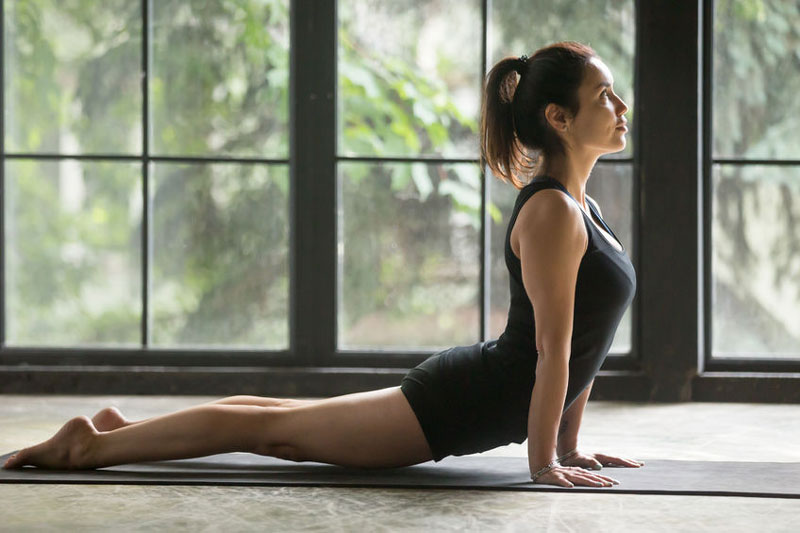Uplift Yourself in Upward Facing Dog
1 Yoga Pose to Approach with Caution
By Tammy LeBoss | thefitprofoodie.com
 Copyright: fizkes / 123RF Stock Photo
Copyright: fizkes / 123RF Stock Photo
1 Yoga Pose to Approach with Caution
Upward Facing Dog is a backbend that offers many benefits. Doing this consistently can improve posture, aligns the spine, stretches the chest, shoulders, abs and hip flexors. When applied properly, this yoga pose can be physically and mentally uplifting. This pose is a great healthy back exercise for which most students will need clarification. It is not always clear when to ‘squeeze this’ or to ‘let go of that’ especially when yoga offers so many areas to focus on. For this move, instructors must cue students to let go of their glutes. The reason for this has to do with allowing the SI joint (sacroiliac joint) to articulate during this movement. This is a very important point that many instructors over-look.
The sacroiliac joint is where the sacrum forms joints with the top of the pelvis. These joints are the main junctions where the weight of the entire upper body transfers down to the legs and serves as an attachment place for many ligaments and tendons. Comprised of four vertebrae that are fused together, the sacrum is important as it supports the entire spine as its ‘home’ base structure. It has also been referred to by doctors as the ‘sacred bone’ supported by ligaments, not muscles. It is interesting to know that this joint is intelligently designed to articulate, but it’s also supposed to be stable. Learn more about this crucial joint and more in NAFC Yoga200™ Interactive course, and get your students safely and effectively into poses using yoga principles of alignment.
Pro Tip: When explaining any pose, aim for few words and fewer metaphors.
Here’s a simple way you can apply ‘keeping it simple’ using NAFC ANSER™:
- A- (Align joint) center of heel in line with 2nd toe
- N- (Neutral spine) neutral pelvis
- S- (Square hips) Feet hips-width apart
- E- (Engage) Contract quadriceps, release glutes
- R- (Retract) draw shoulders back and down
Challenge your cuing skills. Try ‘blind cuing’ by closing your eyes, and using 20 words or less (like the above example) per exercise. Teach your students how to feel their movements, as opposed to thinking about them. Good luck and be sure to let us know how you’ve succeeded in getting others out of their head into their bodies!
Written by: Tammy LeBoss, The FitPro Foodie

